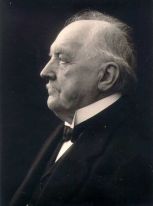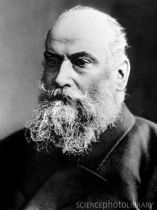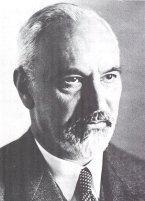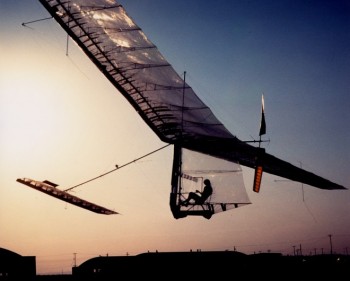Dear Reader, Student, Pilot, Air Passenger, Engineer, Scientist, Interested Layman…:
Welcome to follow the resolution of a scientific riddle which has baffled human imagination since the dawn of science into present time, formulated by Kenneth Chang in New York Times on Dec 9 2003 in Staying Aloft: What Does Keep Them Up There? as follows:
- To those who fear flying, it is probably disconcerting that physicists and aeronautical engineers still passionately debate the fundamental issue underlying this endeavor:
- What keeps planes in the air?
1. Old Theory with Old Answers
You will find that the answers to the question what keeps planes in the air, which you can find in classical books and articles in science and popular science, fall into one of the following categories:
- non-trivial but incorrect (for educated)
- trivial and incorrect (for uneducated)
- correct but trivial (for uneducated).
To see how this Old Theory is presented to uneducated as explaination of observations, it is instructive to watch:
- How Airplanes Fly
- Aerodynamics: Forces on Acting on an Airfoil
- Summary of forces (pressure, lift and drag
- How do aircraft remain in the sky? (Physicsworld, August 2013)
Take your time, watch with amusement knowing that you soon will understand much more than The Department of Defense did in 1957 and does even today.
In short you will be able to explain the secret of flight by understanding the flow around the airfoil as
- potential non-turbulent flow before the trailing edge,
- non-potential turbulent flow with 3d rotational slip separation at the trailing edge without pressure rise/drop,
2. New Theory with New Answers
You will be led to a real answer to the question with the following characteristics:
- non-trivial and correct (for both educated and uneducated)
- reveals the real physical mechanism of flight.
The New Theory has been submitted to AIAA, The World’s Forum for Aeronautics Leadership, as the article New Theory of Flight which should generate lively debate to be reported on this site: It contains new mathematics and physics, and is highly controversial by challenging the very foundations of the ruling paradigm defined by Ludwig Prandtl as the Father of Modern Fluid Mechanics 100 years ago.
You will find that the New Theory is based on the following new discoveries, which bring fundamental changes to the science of high Reynolds number flow:
- It is possible to computationally solve the Navier-Stokes equations in the case of high Reynolds number of aerodynamics, using a slip boundary condition as a model of a turbulent boundary layer with small skin friction.
- It is possible to theoretically understand high Reynolds number bluff body flow as potential flow modified by rotational slip separation.
3. The Secret Revealed in Four Basic Steps
- The flow being incompressible with a slip boundary condition can only (as potential flow) separate at stagnation, which cannot occur before the trailing edge (before stall).
- The flow above the wing is thus redirected downwards, which requires low pressure or suction peaking on top of the leading edge, which generates 2/3 of the lift with 1/3 from high pressure under the wing.
- Main drag is created by high pressure (positive) on the leading edge by low speed flow in accordance with Bernoulli’s Principle.
- Lift and drag from the leading edge are preserved by a specific flow separation pattern at the trailing edge with alternating high and low pressure with zero mean.
Here 1. and 4. are the new elements of the New Theory, with 4. the most surprising and intriguing, which are combined with the classical elements 2. and 3. relating to Bernoulli’s Principle from 1738 bridging over 280 years.
4. Understanding
You will discover that the resolution of the riddle can be expressed in basic mathematical terms which opens to understanding why flight is possible. This is because in physics real understanding can only be reached by understanding a mathematical model of the phenomenon under study. You will thus be able to understand what birds have understood since the Archaeopteryx as the first bird took off into the air some 150 million years ago, but man has not until very recently been able to grasp.
5. Ingeniuous Invention
You will find that the resolution is surprising and ingenious but also so simple that you will be able to understand why flight is possible so well, that you will be able to explain to anybody asking the question, from professors to school mates, friends and family members.
You will thus understand the cleverness of birds and why also human beings have been able to lift from the ground up into the air with proper equipment.
6. Incorrect Mathematics
You will discover a thrilling story of mathematical mistakes made by great mathematicians and scientists,
- Newton followed by d’Alembert 1652 (incorrectly) proved that flight is impossible,
- Kutta and Zhukovsky (incorrectly) proved in 1904 that flight is possible after the Wright brothers successful powered heavier-than-air flight in 1903 by connecting lift to circulation.
- Prandtl (incorrectly) connected drag to thin boundary layers in 1904.
- Aviation developed during the 20th century based on the (incorrect) theory of Kutta-Zhukovsky-Prandtl.
The fathers of the (incorrect) modern theory of flight: Kutta, Zhukovsky and Prandtl.
In short
- Kutta-Zhukovsky developed a (incorrect) theory for lift without drag,
- Prandtl developed a (incorrect) theory for drag without lift,
while what was needed was a correct theory for lift and drag.
7. Correct Mathematics
You will find that the miracle of flight can be explained from the following properties of the slightly viscous incompressible fluid flow characteristic of aerodynamics:
- slightly viscous flow can be simulated with a slip (zero skin friction) boundary condition
- potential flow satisfies slip and can only separate at stagnation
- slightly viscous flow undergoes 3d rotational slip separation without the high pressure of potential flow.
1-3 are carefully explained in on this site, and the explanations are not complicated. Yet they combine into the marvelous invention of flight.
8. Presentation: Overview
To get an overview you may browse the following Powerpoint presentation:
9. The Dream of Human Powered Flight
The Gossamer Condor pedaled and piloted by Bryan Allen won the Kremer Prize in 1977 as the first successful human powered flight. This was the dream of Icarus and Leonardo da Vinci which thus ultimately came true only recently, and then after seemingly endless trial and error.
10. Short History of Flight
A short history of the theory and practice of flight is as follows:
- The flight of birds was intensely debated already by the Neanderthalers.
- Newton proved that powered human flight is theoretically impossible by using incorrect mathematics.
- The Wright brothers showed in 1903 that powered human flight is possible in practice.
- The mathematicians Kutta and Zhukovsky proved in 1904 that powered human flight is possible by using incorrect mathematics.
- In 2008 we proved that powered human flight is possible by using correct mathematics. Theory and practice eventually met in a happy marriage.
11. Watch and Ask Questions
- The Secret of Flight (Alexander Lippisch, 1955)
- Bad News
- Aviation and Aerodynamics
- The Aerodynamics of Flight
- Aerodynamics for Pilots Lecture 1: Lift
- Aviation Ground School Class 2 Applied Aerodynamics
- How Airplanes Work
- Theory of Flight (the film)
12. Getting Ready for Take-Off
13. Take Off: Browse the Menu
You are now ready to in more detail browse the Menu including the Survey of posts.




